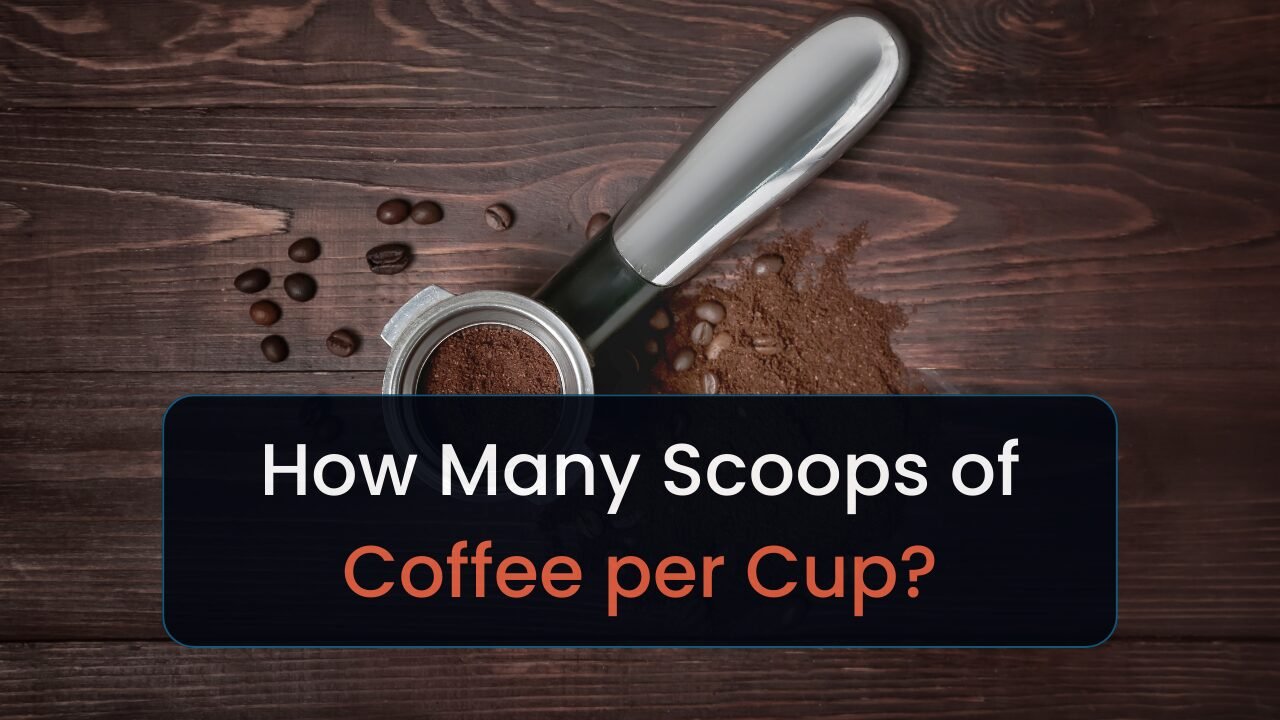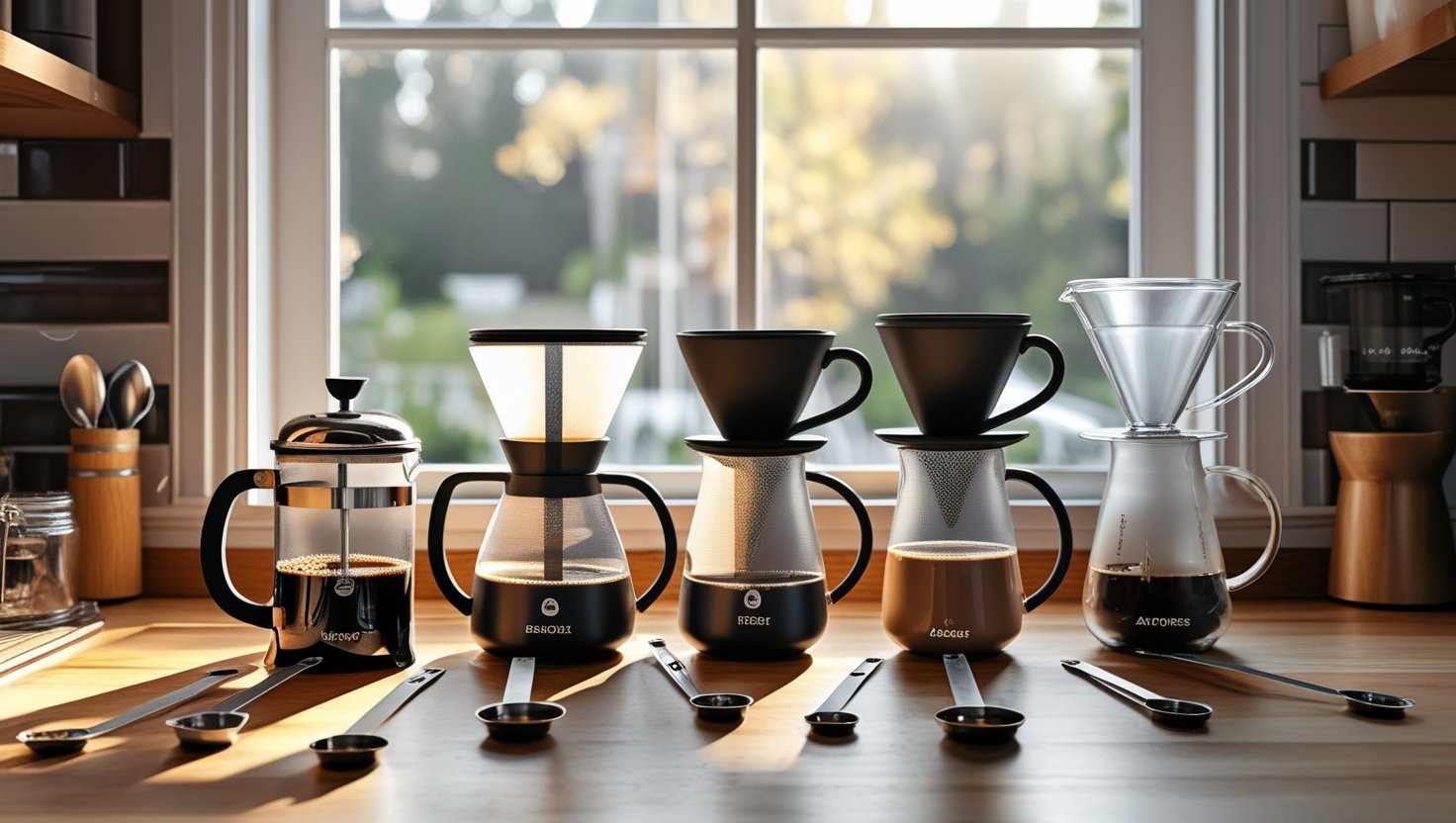How Many Scoops of Coffee Per Cup?
The Simple Math of a Better Brew

☕ The One Time I Ruined a Morning
There’s nothing worse than waking up groggy, stumbling to your kitchen, craving that perfect cup… and then totally messing it up. Too weak. Too bitter. Too strong. I’ve been there.
One morning I had friends over, and I made a pot of coffee that I thought was perfect — turns out, it tasted like dirty water. They were polite, but I could tell. My ratio was off. I eyeballed the scoops, didn’t measure, and paid the price in caffeine embarrassment.
That’s when I realized — a lot of us don’t actually know the right answer to a basic question: how many scoops of coffee should you use per cup?
Let’s break it down, once and for all — with clarity, simplicity, and yes, even a little math.
🧠 The Golden Ratio of Coffee
The “Golden Ratio” is the standard guideline recommended by the Specialty Coffee Association:
1 to 2 tablespoons of ground coffee per 6 ounces of water.
(Source: SCA Brewing Handbook)
This translates to:
-
1 scoop (usually 2 tablespoons) = 1 strong cup of coffee
-
½ scoop = 1 milder cup
But here’s the twist: most mugs hold 8 to 12 ounces, not 6. So if you’re just going by “one scoop per cup,” but your cup is bigger, your coffee might taste weak.
🔢 So, How Many Scoops Per Cup?
Here’s a quick reference based on mug size:
| Cup Size | Scoops (Standard Strength) |
|---|---|
| 6 oz | 1 scoop (2 tbsp) |
| 8 oz | 1⅓ scoops |
| 10 oz | 1⅔ scoops |
| 12 oz | 2 scoops |
| 32 oz (French Press) | ~5–6 scoops |
For a standard drip coffee maker, which brews around 10–12 cups (60–72 oz), you’ll need 10–12 scoops, depending on strength.
🥄 What’s a Scoop, Anyway?
Here’s where things get tricky — not all scoops are created equal.
-
A standard coffee scoop = 2 tablespoons = 10 grams of coffee
-
Some scoops (especially plastic ones from pre-ground bags) might be smaller or larger
To be precise:
-
1 tablespoon of ground coffee = ~5 grams
-
2 tablespoons (1 scoop) = ~10 grams
☝️ If you’re serious about consistency, use a digital scale to measure by weight — not volume. That’s how professional baristas do it.
🌊 Let’s Talk Water
Water matters just as much as the coffee.
Use filtered water if possible, and measure in ounces, not “cups” from your machine (which are often smaller than real cups).
Here’s the general rule:
1 scoop (10g) of coffee per 6 ounces (180 ml) of water
Adjusting for Strength
If you like your coffee stronger or weaker:
-
Stronger brew = 1.5 scoops per 6 oz
-
Lighter brew = ¾ scoop per 6 oz
☕ Brewing Methods Change the Math
Each coffee method has its own sweet spot. Here’s how many scoops to use depending on your gear:
1. Drip Coffee Maker (10–12 cups)
-
10–12 scoops (level)
-
Use a paper or mesh filter
-
Brew time: ~5 minutes
2. French Press (32 oz)
-
6 scoops (about 60g)
-
Brew time: 4 minutes
-
Coarse grind
3. Pour Over (8–12 oz)
-
1.5 to 2 scoops
-
Brew time: 3–4 minutes
-
Medium-fine grind
4. AeroPress (8 oz)
-
1 to 1.5 scoops
-
Short brew time: 1–2 minutes
-
Fine grind
5. Espresso Machine
-
No scoops — this is measured in grams, not spoons
-
Standard dose: 18–20g per double shot
-
Very fine grind
⚖️ Should You Use a Coffee Scale?
If you want repeatable, café-quality results, yes.
Coffee scoops work okay for daily use, but volume isn’t always consistent — grounds settle, humidity changes, and different beans vary in density.
A digital scale gives you:
-
Precision
-
Repeatability
-
Total control over your brew
Try this ratio:
1 gram of coffee per 15–18 grams of water
-
20g coffee → 300ml water (medium strength)
-
25g coffee → 375ml water (stronger)
☕ Whole Beans vs Ground: Does It Matter?
Absolutely.
Whole beans stay fresher longer and grind more consistently. If you’re using pre-ground coffee:
-
Scoop size stays the same, but
-
Grind size affects taste
➡️ Too fine → over-extraction, bitter
➡️ Too coarse → under-extraction, sour or weak
If possible, grind fresh right before brewing. Even a basic burr grinder will dramatically improve your cup.
🧪 Common Mistakes When Measuring Coffee
Even seasoned coffee lovers slip up. Here are the most common issues:
-
Eyeballing scoops — inconsistent strength
-
Using the wrong cup-to-ounce conversion
-
Trusting the coffee maker “cup” markings
-
Scoop overflow (heaping vs level)
-
Not accounting for brew method
Always go level, not heaping — unless you’re dialing in a custom strength on purpose.
🔁 Quick Conversion Guide
| Cups of Coffee | Scoops (Standard) | Tablespoons | Grams |
|---|---|---|---|
| 1 cup (6 oz) | 1 scoop | 2 tbsp | 10g |
| 2 cups | 2 scoops | 4 tbsp | 20g |
| 4 cups | 4 scoops | 8 tbsp | 40g |
| 6 cups | 6 scoops | 12 tbsp | 60g |
| 10 cups | 10 scoops | 20 tbsp | 100g |
💡 Pro Tips for the Perfect Ratio
-
Consistency is key: Always use the same scoop or scale
-
Start simple: 1 scoop per 6 oz, then adjust
-
Keep notes: If you find a brew you love, jot down the ratio
-
Freshness first: Even the right ratio won’t help stale beans
-
Use filtered water: 98% of coffee is water — make it good
🌿 How Coffea Alchemy Measures Up
At Coffea Alchemy, we believe brewing coffee should be easy, approachable, and a little magical. Whether you’re using a French press at home or a simple drip machine, getting the right scoop-to-cup ratio is step one to unlocking better coffee, one cup at a time.
We share guides like these not just for technique, but to help you enjoy the ritual — because great coffee isn’t just science; it’s also soul.
🧭 Final Thoughts
How many scoops of coffee per cup? The answer is simple on paper — but it’s also personal. One scoop per 6 oz is the rule. But taste? That’s all you.
So tomorrow morning, when you reach for your scoop, think of it like seasoning: the right amount unlocks flavor, balance, and satisfaction.
Just one question remains — now that you know the perfect ratio, what kind of coffee will you brew next?
Related Post
Our newsletter
Subscribe to our weekly newsletter & keep up with our latest recipes and organized workshops. You can unsubscribe at any time.


